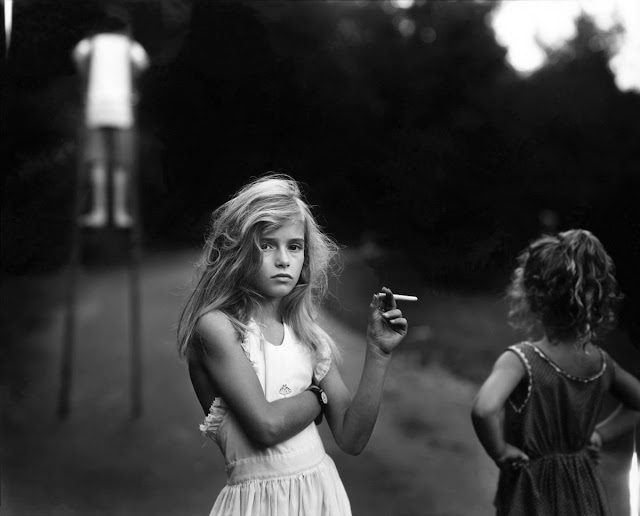Gordon Parks: Issues in Black and White
Most photographers stay true to their field of specialty; rarely do photojournalists successfully delve into studio portraiture without going back to their documentary background, and vice-versa. There are of course a few rare instances where a photographer can go beyond his field and be recognized internationally. Gordon Parks is one who jumped from one field to another, dealing with different issues in black-and-white and in color, all with seemingly little difficulty.
Gordon Parks' name might mean something different depending on who you ask; to a photojournalist, he's known for his memorable images on poverty and civil rights, to a fashion photographer, he's remembered for his 1960s portraits of Parisian women, to a film enthusiast, he's known for his documentaries and films on black issues.
Parks first became interested in photography in 1937 when he saw pictures of migrant workers in a magazine. After getting his feet wet in the industry, he became a fashion and portrait photographer on the encouragement of Marva Louis, Joe Louis' wife. In 1942, he began photographing for the Farm Security Administration (FSA), the very same organization which sponsored the photographers who captured these fine images. It was also around this time that he photographed his "American Gothic", a stoic portrait of cleaning lady Ella Watson (header photo above).
After the FSA disbanded, Parks moved to the Office of War Information (OWI), but he later left due to the anti-black sentiment he found there. The move gave him a chance to rediscover fashion photography; he was soon photographing for Harper's Bazaar, Glamour, Vogue and Time magazine, with his more famous fashion photos being done in Paris.
By the 1960s, Parks had moved on to films, first directing in "The Learning Tree", a film based on his semi-autobiographical novel, and then later on the hit movie "Shaft". It was also around this time that he covered the civil rights movement, taking portraits of Malcolm X and the people around him.
Towards the end of his life, Parks was still busy photographing, filming, writing and experimenting, and continued to receive accolades for his past achievements.
Looking through all of these photographs (which aren't even a fraction of Parks' oeuvre), one would think that they were taken by different photographers, yet such is the passion of Gordon Parks that he went and captured those subjects that he felt worth taking. While it may not matter much nowadays, the fact that he was black and wanted to get into the photography industry despite the difficulty was something that has helped today's generation of minorities. Hopefully, his photographs will stand the test of time to show that color doesn't matter when it comes to real quality and beauty.
The Gordon Parks Foundation is a good place to learn more about the photographer's works, from the civil rights issues to fashion, in black-and-white and in color. For hardbound recommendations, try Fields of Vision: The Photographs of Gordon Parks: The Library of Congress, Bare Witness: Photographs by Gordon Parks and Gordon Parks: No Excuses.











An inspiration of a photographer. Versatile -and- he ran against the stream of likeliness.
ReplyDeletethe black ppl dont look as happy as the white ppl
ReplyDeleteDamn good, very stark, very well done!
ReplyDeleteThought provoking pics!
ReplyDeleteI love black and white photography and Parks is one of my favorites. You should check out Mike Disfarmer as well. He was from Arkansas and did some really amazing portrait work.
ReplyDeletethese photos are very timeless
ReplyDeleteI've never heard of Gordon Parks and I'm really amazed that he was able to capture human relationships in these..the pic of the girls with the doll is really cute
ReplyDelete~Dale
http://www.savvyspice.com/
Black and white photography is awesome when done this well
ReplyDelete